Penguinistas used to worry about the dreaded fork, especially of Linux. “What if Linux forks and becomes like Unix?” was a question often being posed in the open source media. Linus Torvalds would do his best to put those fears to rest, explaining that under the GPL forks are usually to be welcomed.
He was of the opinion that if a fork improves a product and is liked by the users, those changes will almost certainly be rolled back into the originating application. If not, and the fork is indeed a marked improvement on the original, then the fork becomes the standard bearer at the expense of the original application.
We’ve actually seen this theory in practice on numerous occasions, and it nearly always worked out just as Torvalds predicted. As an example, take the case of LibreOffice, which started as a fork of OpenOffice.org. Most users agree that The Document Foundation has greatly improved on the original OOo code, so much so that many if not most OpenOffice users have made the switch to LibreOffice.
There are many reasons why an open source project may fork. Today we’ll look at some notable forks of open source projects that have ended up benefiting the open source community:

Mandrake/Mandriva: The French distro, Mandrake (later, Mandriva), started in 1998 as a fork of the old Red Hat desktop edition, using KDE instead of GNOME. It also differed from it’s parent distro by including a graphical installer, which made installing Linux much easier than it’d ever been. The distro was one of the first to utilize graphical configuration tools, which helped make this the first “user friendly” distro, suitable for newbies right out of the box.
Within a couple of years, Mandrake ceased to be just a value added Red Hat clone and grew into a distinct distro in it’s own right. Until about six or seven years ago, this distro was near the top of most popularity lists, until it was eclipsed by newer easy to use distros like Ubuntu.
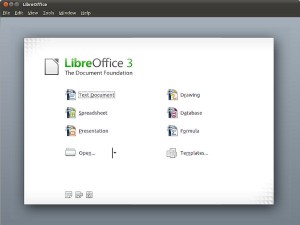
LibreOffice: This office productivity suite came into being in 2010 when many of the main developers at OpenOffice.org revolted due to perceived neglect from Oracle, which had taken ownership of the project with it’s aquisition of Sun Microsystems.
These developers set-up an organization, The Document Foundation, to oversee the new project and very quickly released a version that was a marked improvement on the original. They haven’t looked back since. The project continues to grow and now completely overshadows OpenOffice.org, which is now under the control of the Apache Foundation.
-
PCLinuxOS: Just as Mandrake started life as a value added fork of Red Hat, PCLOS began as project based on Mandrake/Mandriva. Also like Mandrake, this distro very quickly moved away from it’s parent distro to become a unique distro of its own, although it continues to use many of the configuration tools originally developed by Mandrake.
-
MATE: When Gnome 3 replaced the classic desktop with something different, a large percentage of the user base was unhappy. This was not unlike what had happened with KDE a couple of years earlier when they’d transitioned to version 4x. In KDE’s case, the user brouhaha died down when KDE sanded down some of the rough edges on the changes they’d made. This has not been the case with GNOME. Many of their longtime users still express unhappiness.
In response to this, a user of Arch Linux took the GNOME 2 code, renamed it MATE and continued development. There are currently plans to port the project to GTK+3. The project is largely supported by Linux Mint, which includes it as a default desktop in their Ubuntu based distribution and as the primary desktop in Linux Mint Debian Edition. MATE is also available for use in Arch Linux, Ubuntu and Debian and has been proposed for inclusion in future releases of Fedora.
An excellent article on MATE by Christopher Tozzi was posted Sunday on The Var Guy.
-
Unity: This desktop environment isn’t really a fork, but is a shell interface designed by Ubuntu to run atop Gnome 3. Like MATE, it was developed partly as a response to user pushback over Gnome 3’s “improvements,” but is also designed to optimize the limited screen space on netbooks.
So far user response to Unity has been somewhat negative and seems to have fueled some user migration from Ubuntu to Linux Mint. The desktop is mainly available on desktops derived from Ubuntu, although many distros have plans to include it as an option.
-
Cinnamon: A fork of the GNOME shell, Cinnamon is Linux Mint’s attempt to make GNOME 3 palatable to their users. Basically, Cinnamon serves up the old reliable GNOME 2 user experience while using GNOME 3 under the hood. In this way, it’s able to take advantage of new features included in GNOME while offering users the traditional desktop experience they want.
So far, user response to Cinnamon has been fairly positive. In addition to Mint, packages for Cinnamon are available for Ubuntu, Fedora, openSUSE, Arch Linux, Gentoo and Sabayon. In January, Cinnamon received a fairly favorable review on ZDNet by Steven J. Vaughan-Nichols.
-
CentOS: While PCLOS and Mandriva began as forks intent on becoming unique desktops, the purpose behind CentOS is completely different; CentOS exists almost entirely to be a clone of the RHEL server. In other words, it’s Red Hat for those who don’t want to pay for Red Hat’s services.
Except for the removal of some copyright notices, CentOS is a complete copy of the latest and greatest version of RHEL, even down to security and bug-fix patches. This is done with Red Hat’s blessings, with Red Hat cooperating by pushing updates to the CentOS developers in a timely fashion.
These days, CentOS is a favorite of web hosting companies who are plagued by low margins, making free CentOS something of a godsend.
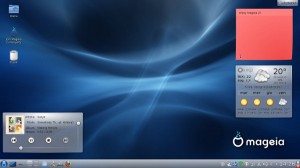
Mageia: In 2010 when it started to look like Mandriva might not survive a financial crisis, a group of former employees, along with several other developers, users and supporters of the Mandriva community, forked the code to create Mageia. Although the distro is still in it’s infancy, user’s have been fairly positive about their experiences with the OS, and a reorganized Mandriva has announced the distro will be the platform for their new Business Server.
In June of this year, Linux User & Developer posted a review of Mageia 2.
This list makes it clear that Torvalds is pretty much right. Forks of open source projects generally have a positive outcome, creating new choices for users and building a more robust repository of free software. Unfortunately, there are some bad players rebranding open source projects, Oracle Linux immediately comes to mind, but we’ll leave that for another day.
Christine Hall has been a journalist since 1971. In 2001, she began writing a weekly consumer computer column and started covering Linux and FOSS in 2002 after making the switch to GNU/Linux. Follow her on Twitter: @BrideOfLinux

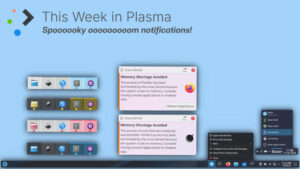
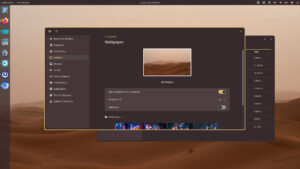
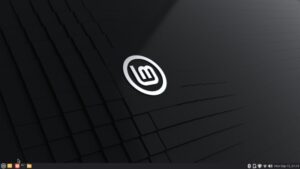


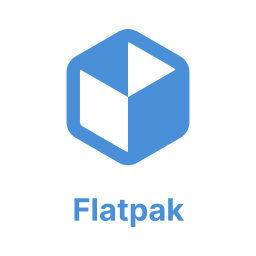
You forgot Trinity Desktop, http://www.trinitydesktop.org/
The fork of KDE3 for those of us who think KDE4 is a mistake.
@Bob Robertson You got me there, Bob, with egg on my face. Until a week ago, I’ve been an exclusive KDE user and somehow the Trinity Desktop flew under my radar. When the KDE4 brouhaha was happening, I was running an ancient version of Mandrake, which I dared not upgrade as my computer specs wouldn’t handle a new distro.
It might interest you that forking is in the news today. More news on Nemo, Mint’s planned fork of Nautilus:
http://www.zdnet.com/linux-mint-developers-work-on-gnome-file-manager-fork-7000002232/
That’s not a screenshot of the Unity desktop it’s a screenshot of Unity Linux. The 2 are totally unrelated.
@JasonLG Thanks for the heads up. No one here has any experience with Unity, so I guess someone just got confused. I’ll see to it that this is fixed.
Considering how many times you mention Ubuntu, I am surprised you did not mention Ubuntu itself? I would have to say that is one of the most prominent forks in the open source world. And of course its primary fork, Linux Mint.
Also, it is worth noting that opensuse was originally a fork of Slackware.
Also worth noting are some behind-the-scenes forks; GCC/EGCS, MySQL/Maria, and many others.
Also, a bad example of forking, one could mention Mac OSX/*BSD’s.
Good article though.